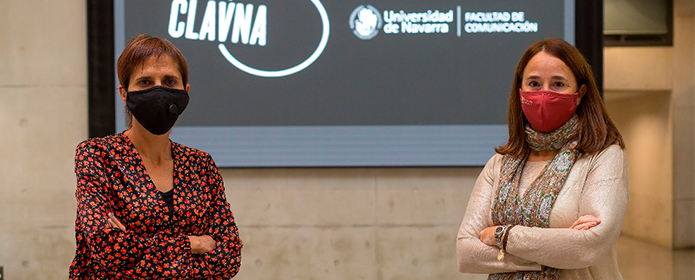20030801-"En los materiales educativos de la web todavía predominan los formatos utilizados en los soportes impresos", asegura una experta
"Web-based educational materials are still dominated by formats used in print media," says one expert
María Luisa Santos Pascualena has defended her thesis doctoral thesis at the Universidad
"Although it is technically possible to integrate text, images, sound, video and animations on the web, the predominant information formats in educational materials are still the same as those already used in printed media: text and images". This is one of the conclusions presented by María Luisa Santos Pascualena in her thesis "Criteria of communicative effectiveness in the design of hypermedia materials for Education. Analysis of cases on the World Wide Web". The doctoral work , directed by Professor José Luis Orihuela Colliva, has been defended at the University of Navarra with the maximum grade, cum laude unanimously.
With a degree in Information Sciences, María Luisa Santos Pascualena (Madrid, 1970) has been an associate professor at School of Communication at the University of Navarra since 1998. She has taught courses in several masters and is co-author of the book Introducción al design Digital.
From multimedia to text and imagesMaría Luisa Santos Pascualena has explained that the programs of study carried out on educational contents developed for the web conclude that they present, in addition to "pedagogical problems", defects related to the "scarce integration of multimedia formats and with the design of unfriendly environments for students, in which navigation is difficult".
In this context, Santos Pascualena proposed the goal to establish criteria that would contribute to making the design of the materials "more effective", from the point of view of communication, and would favor a "more transparent and intuitive" navigation. The establishment of these criteria has a double application internship, the author indicated. On the one hand, it makes it possible to "support the process of design" in the phases prior to development of the materials, "reducing the need to carry out tests with users". On the other hand, it serves as a basis for the "assessment of the quality" of the materials already produced.
In his research, Santos Pascualena noted that the combination of information formats has evolved towards a design that includes "only those formats that provide communicative effectiveness to the material". Thus, the presence of animations, sound and video is "very reduced", and they are generally incorporated "only when they provide complementary information", he assured.
This predominance of text and images over other formats is due to two types of factors, explained Santos Pascualena. On the one hand, to the technological conditioning factors of the network Internet, such as "the limitation of bandwidth available, the current audio and video compression standards, or the technical complexity in the elaboration of content in audiovisual formats". And on the other hand, it is due to psycho-pedagogical factors "derived from the theory of information processing, which considers that the formats that most enhance the ability of student to remember information are those whose nature is permanent, i.e. static formats such as text and images".
Parallel and hierarchical navigationIn relation to the design navigation, Santos Pascualena concluded that the design materials used in "cooperative learning environments" are more effective "when their hypertextual structure integrates learning contents, communication tools and transversal activities in parallel". In this way, "the transversal activities are related in a significant way with the learning contents and are carried out in a cooperative way through the communication tools", he pointed out.
However, in the case of the courses of the "Web-based Learning and training methods", since they have important antecedents in the field of Computer-Assisted teaching and are widely used, the design of their navigation is usually solved efficiently, by means of "a model of hierarchical-linear hypertextual structure".


